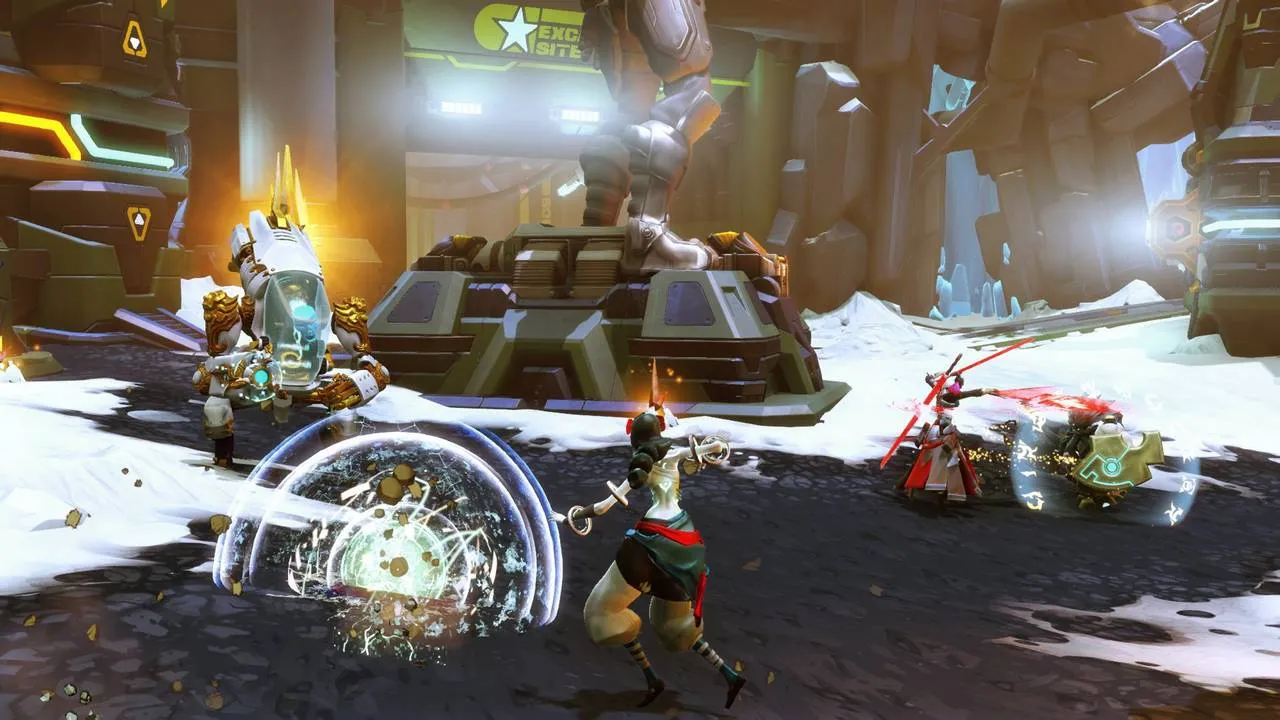
Battleborn: A Deep Dive into Gearbox’s Unique Hero Shooter
Contents
Battleborn launched into a crowded market, facing stiff competition from Blizzard’s Overwatch. While not identical, comparisons were inevitable, often unfairly disadvantaging Battleborn. This review aims to dissect Battleborn’s unique features, examining its strengths and weaknesses to help you decide if this hero shooter deserves your time and attention. We’ll explore its distinct blend of FPS and MOBA elements, diverse character roster, and engaging PvE content, while also addressing its shortcomings.
A Fusion of Genres: FPS Meets MOBA
Developed by Gearbox Software, the creators of Borderlands, Battleborn features character-based gameplay heavily influenced by MOBA mechanics. This means that alongside mastering individual hero abilities, players must also consider mob control, character leveling, ultimate upgrades, and gear purchases. This sets it apart from purely skill-based hero shooters like Overwatch. The comparison is akin to contrasting Battlefield with Call of Duty – valid in terms of personal preference, but not a true apples-to-apples comparison.
 alt: A chaotic battle scene in Battleborn with numerous characters and enemies
alt: A chaotic battle scene in Battleborn with numerous characters and enemies
Battleborn shines with its robust single-player and multiplayer offerings, cleverly intertwined. The single-player campaign unveils the game’s lore and progressively unlocks characters usable in both modes. Players can also unlock heroes through multiplayer challenges. Gear found in either mode is usable in both, maintaining balance. While only eight missions long, each averaging 45 minutes, the quality surpasses many acclaimed action titles like Far Cry Primal and Homefront: The Revolution.
Each mission boasts unique level design, transporting players from floating gemstone castles to snowy mountains and blazing rainforests, all rendered in the signature Borderlands art style. Borrowing another element from its predecessor, Battleborn emphasizes chaotic battles with diverse enemy types and challenging boss encounters. Players face robotic snipers, monstrous creatures, and shadowy entities, each demanding different tactics. This serves as excellent practice for the multiplayer arena.
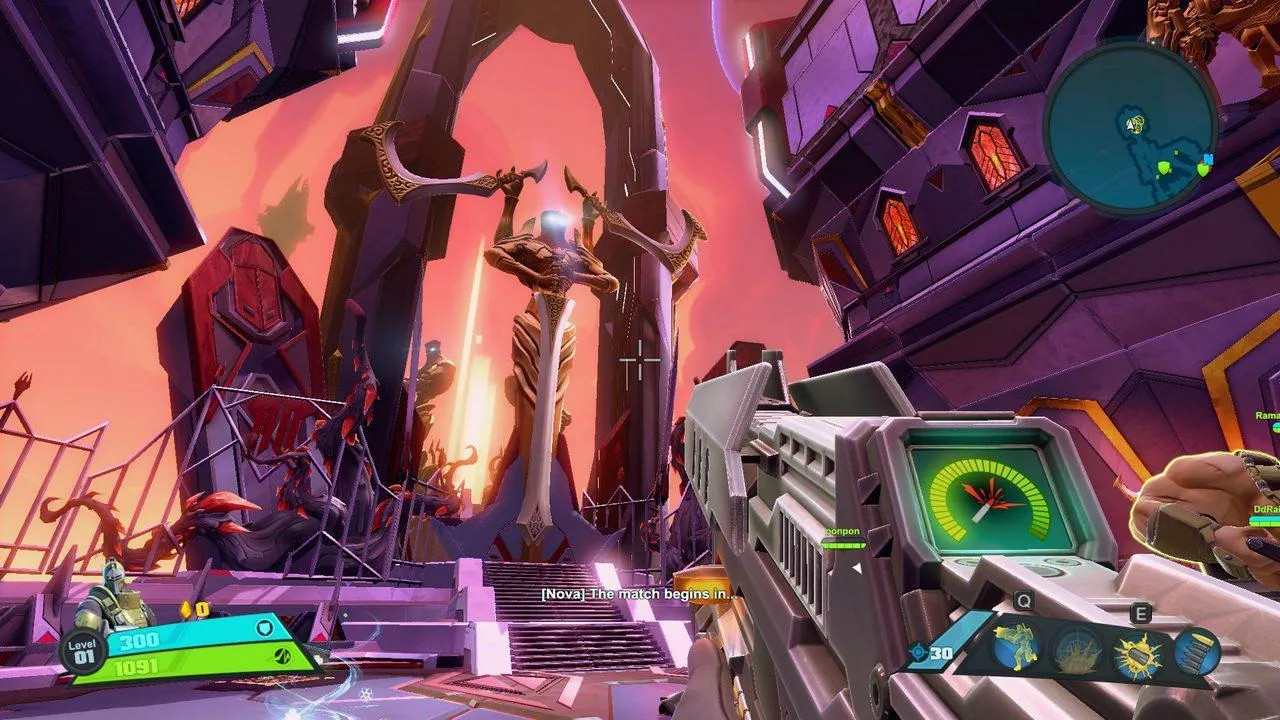 alt: Battleborn gameplay featuring a character in a fiery environment
alt: Battleborn gameplay featuring a character in a fiery environment
The multiplayer experience combines FPS and MOBA elements across three modes: Incursion, Capture, and Meltdown. While Incursion and Meltdown most effectively utilize MOBA mechanics, all three offer unique gameplay. Incursion tasks players with protecting AI-controlled mobs as they attack the enemy’s giant robots. Meltdown involves escorting mobs to sacrifice points, with larger mobs yielding higher points. While seemingly similar, their distinct map designs create divergent gameplay. Incursion features a single primary lane, culminating in 5v5 clashes at a central point. Meltdown utilizes three lanes – two for mobs and a central lane for map control – allowing victory even if losing head-to-head fights.
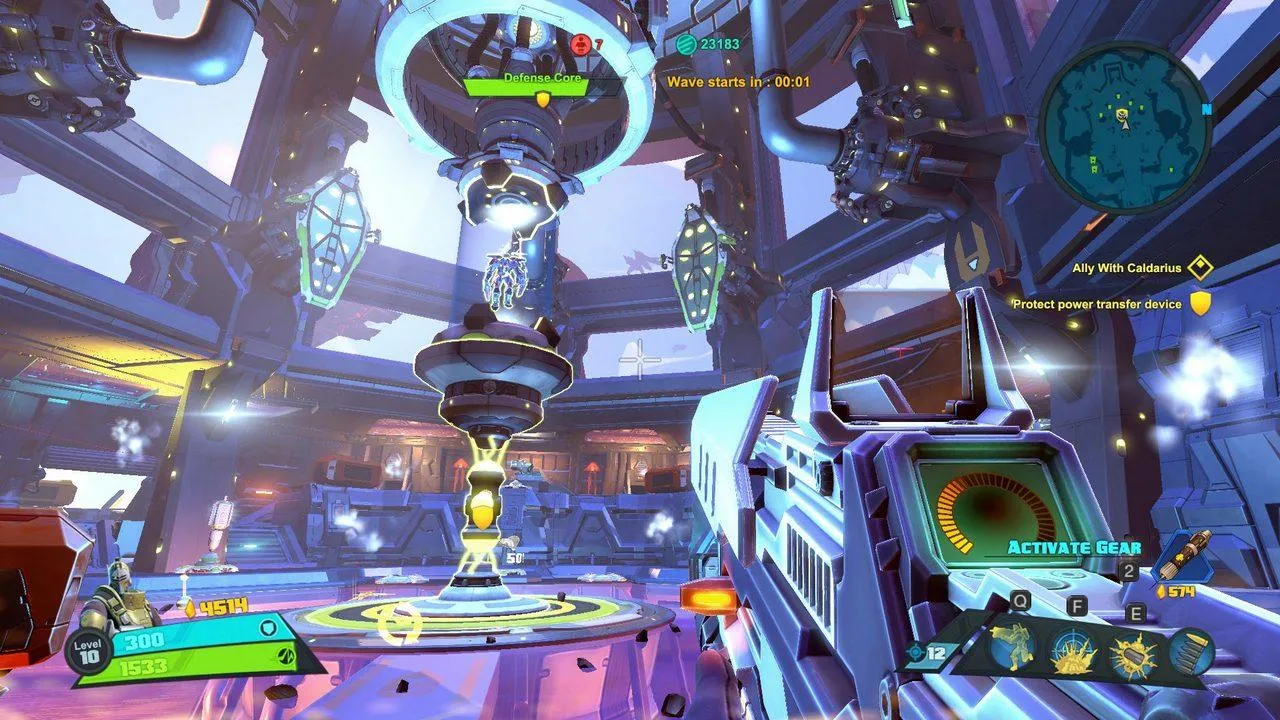 alt: Battleborn gameplay showcasing the in-game currency and upgrade system
alt: Battleborn gameplay showcasing the in-game currency and upgrade system
Shards, the in-game currency, play a crucial role. They purchase gear, heavy units, and defensive or offensive structures. Shard management strategies differ across game modes, adding another layer of strategic depth.
A Diverse and Customizable Roster
Battleborn boasts 25 launch characters with five more planned as free updates. Each hero is distinct in appearance, personality, abilities, and playstyle, fulfilling clearly defined roles, reminiscent of DOTA 2. Pushers, supports, and carries all have their place, though nukers and junglers are absent.
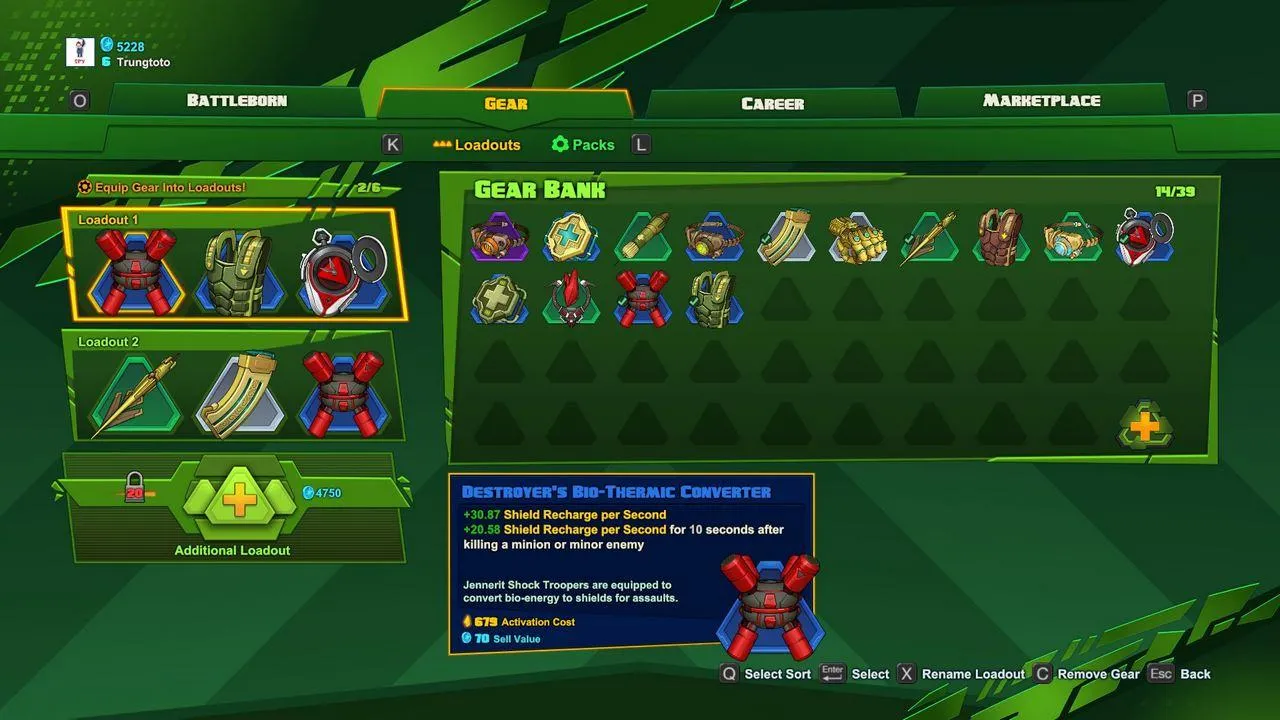 alt: Battleborn character selection screen showing the diverse roster
alt: Battleborn character selection screen showing the diverse roster
The Helix system further differentiates characters, allowing for ability customization. Each level-up presents two upgrade choices, allowing players to tailor abilities and roles. Unlike traditional MOBAs, gear isn’t purchased in-game. Loadouts containing up to three gear items are pre-configured, with one chosen at the start of a match. Activating gear consumes Shards, with more powerful gear costing more. This balanced approach prevents overpowering items from disrupting gameplay.
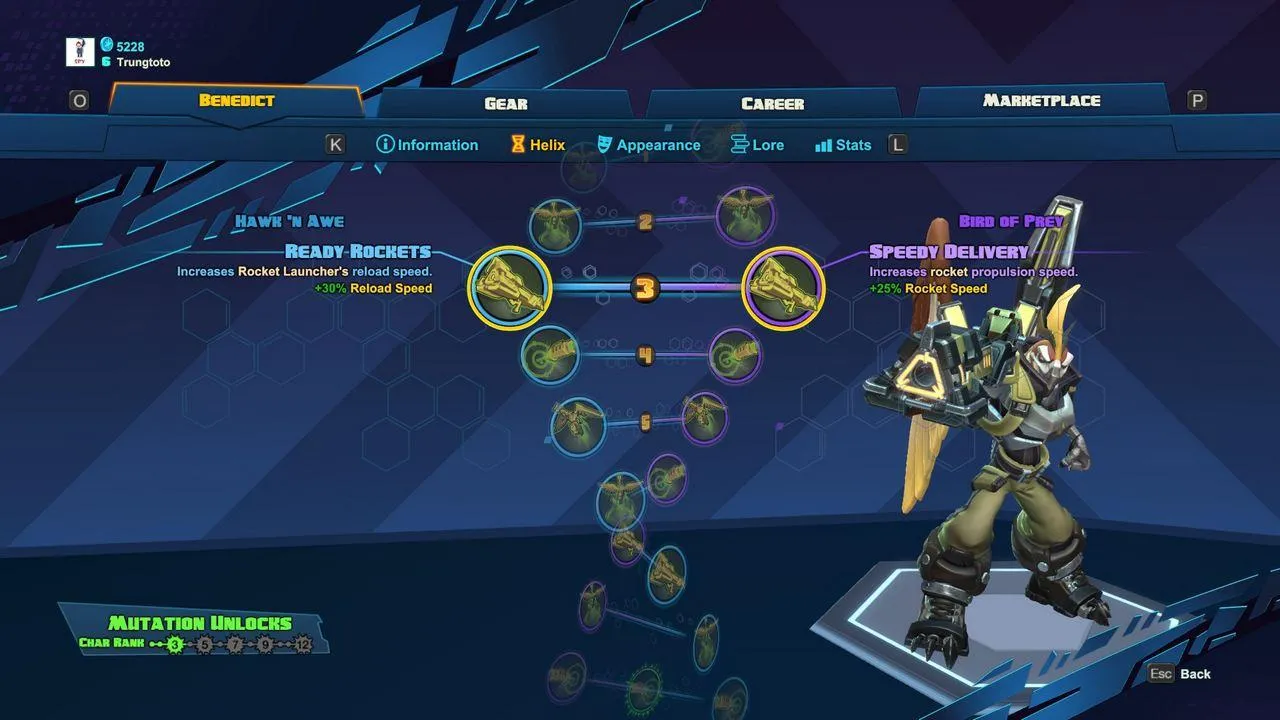 alt: Battleborn character customization screen showcasing the Helix system
alt: Battleborn character customization screen showcasing the Helix system
Network Struggles and Visual Overload
Despite its strengths, Battleborn suffers from significant drawbacks. The matchmaking system is inefficient, with long wait times in Southeast Asia. Instead of filling lobbies individually, the system attempts to match pre-formed groups of five, leading to extended searches even with sufficient players. This issue, raised during testing, remains unaddressed. Server selection could mitigate this problem, but no such feature exists.
 alt: A screenshot depicting the network issues and matchmaking problems in Battleborn
alt: A screenshot depicting the network issues and matchmaking problems in Battleborn
The game’s overuse of visual effects and bright colors can also be overwhelming. Chaotic battles with multiple ultimates and mobs create a sensory overload, making it difficult to focus. While visually appealing, the vibrant colors and excessive effects obscure crucial elements like characters, objectives, and enemies.
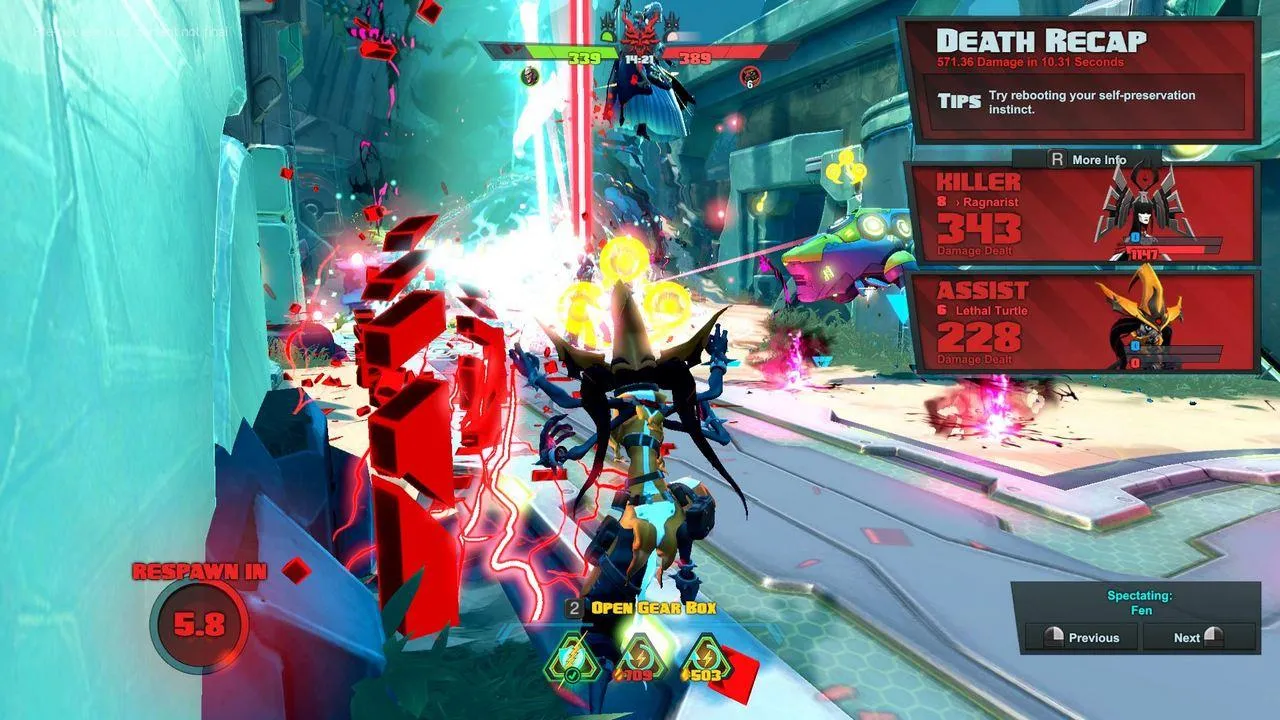 alt: A chaotic battle scene in Battleborn with excessive visual effects
alt: A chaotic battle scene in Battleborn with excessive visual effects
Finally, Battleborn’s punishing gameplay loop can be frustrating. Losing a fight leads to experience deficits, loss of map control, and Shard disadvantage. Individual skill can’t always compensate for team shortcomings. Playing with randoms can be particularly challenging due to a lack of team coordination and the prevalence of AFK players. The 30-minute penalty for leaving a match is insufficient to deter this behavior. Further compounding the issue is the matchmaking system occasionally pitting players against opponents 40 levels higher, creating unbalanced matches with no recourse other than enduring the experience or incurring a penalty.
Conclusion: A Diamond in the Rough
Battleborn offers a unique and engaging blend of FPS and MOBA elements, with a deep character roster and a compelling single-player campaign. However, its flawed matchmaking system, visual overload, and punishing gameplay loop hinder its potential. If you can overcome these hurdles and find a dedicated group to play with, Battleborn offers a rewarding experience unlike any other hero shooter.





Comments (0)